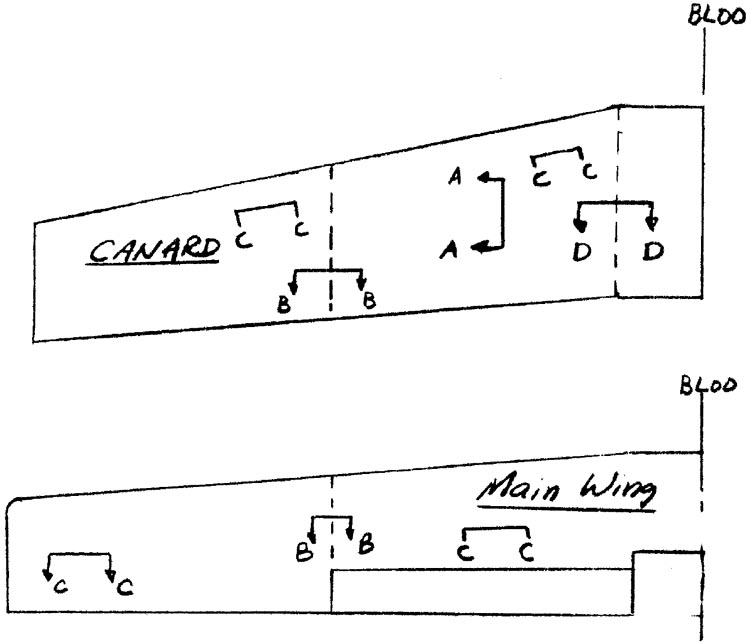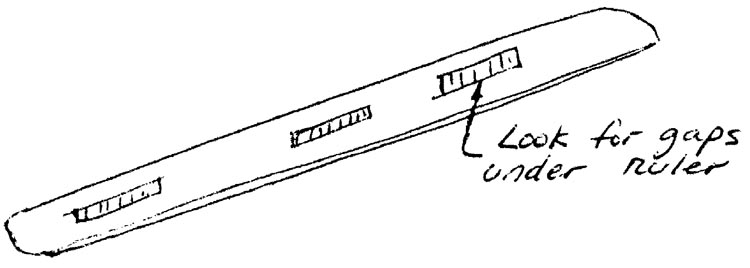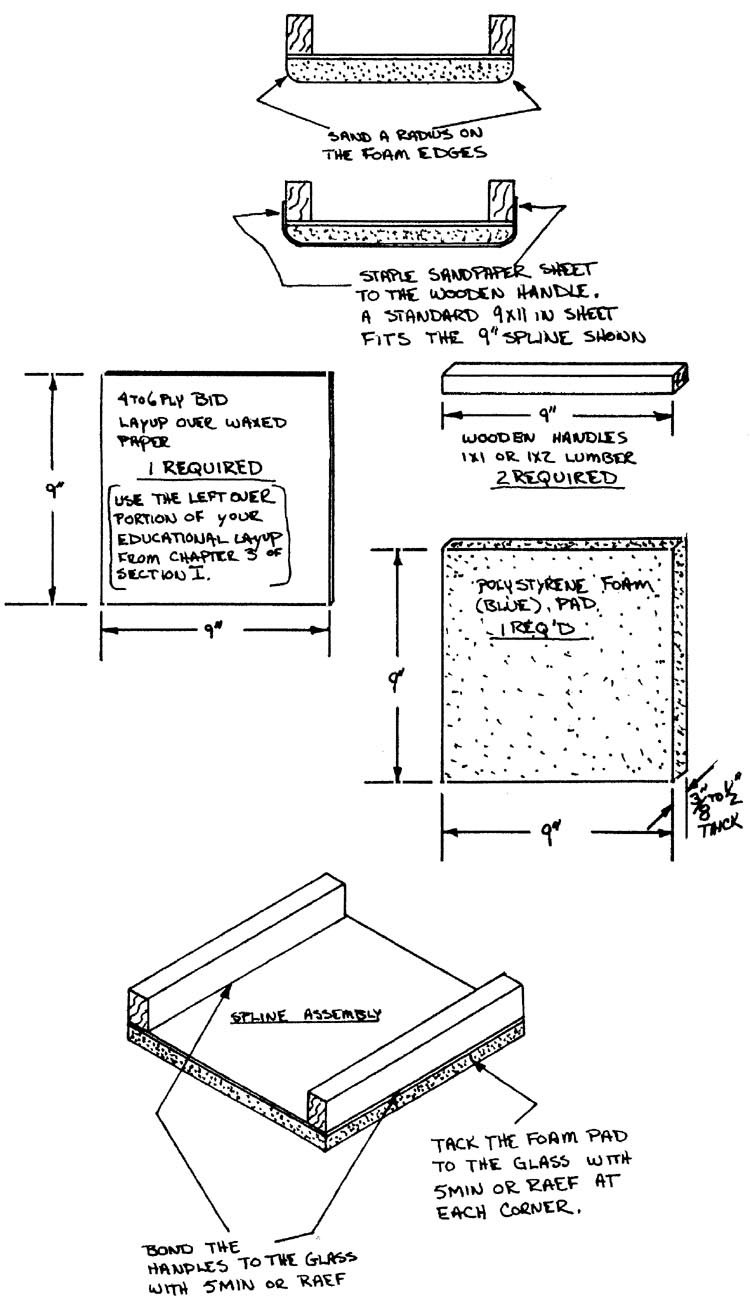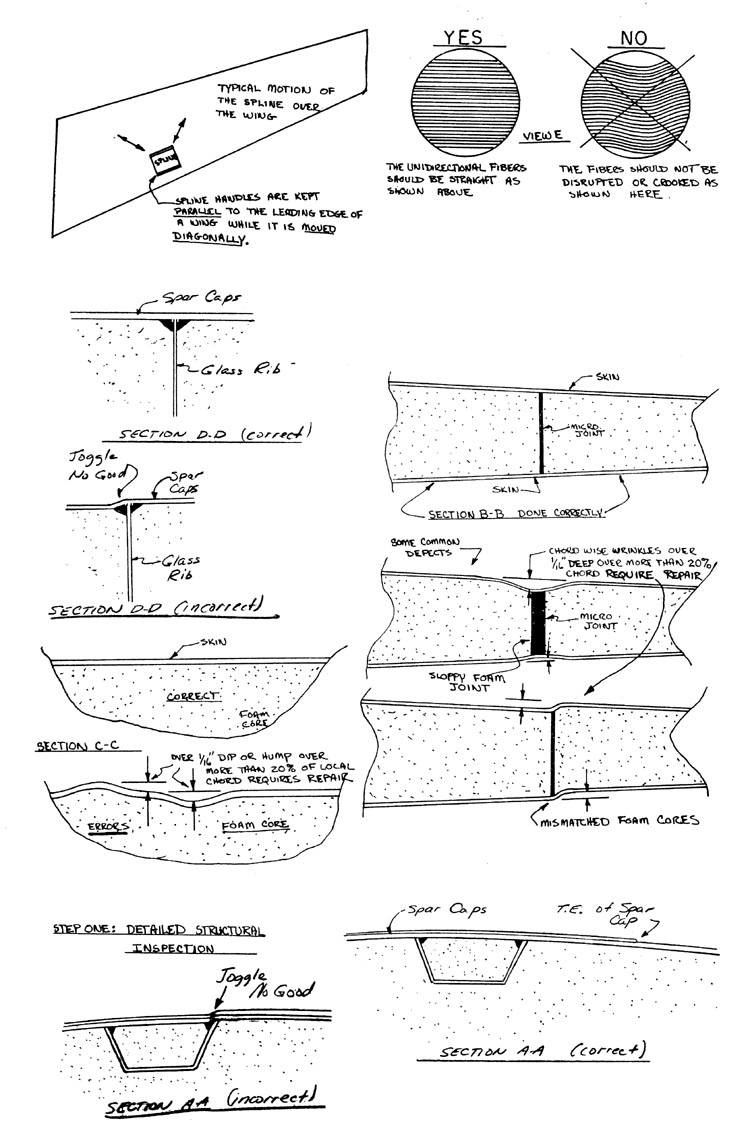Q1 Plans Chapter 19 Page 19-2
- Details
- Category: Quickie Plans
- Published: Monday, 12 May 2008 10:28
- Written by Dan Yager
- Hits: 2281
it is heavy, requires a tremendous amount, of work to get a high gloss finish, and chips easily (brittle).
Sanding will occupy a large percentage of the time spent finishing the composite aircraft. Sandpaper in 36 to 60 grit, 100-grit, 220 grit, and 320-grit roughnesses will be used. Standard 9”x 11” sheets are the most versitile. Use a good quality aluminum oxide, or silicon carbide sandpaper. Don’t waste your money on the cheap flint-type sandpapers. Power sanders are not re- commended, it is too easy to damage the structure while using them. Hard (wood) and soft (foam) sanding blocks and the sanding spline shown on page 2 will be your primary finishing tools. A paint spraying setup will be desirable for Feather-Fill, U.V. bart:ier primer and finish painting. Some hand brushing of Feather-Fill and U.V. primer will also be done.
THE FINISHING PROCESS
Finishing the composite airplane is a five step operation. Repairs or rework of structure must be completed first before the obscuring finish is applied, and final structural inspection must be complete. Second, coarse contour filling is done with microspheres/mixed with epoxy (dry micro) as required in areas requiring .03 inch to .20 inch of fill. Any exceptionally gross filling (over .20 in) is also accomplished at this stage using a foam filler. The initial contour sanding begins with the cured microsphere filler, and exceptional caution must be exercised to avoid damaging the structural skins while sanding. Third, featherfill is applied to fill medium sized surface defects up to .03, and as a general fill of the glass surface weave. The fourth step is the application of ultra violet barrier primer. Fifth, the final finish paint is applied.
The following sketches are descriptive of the finishing process and its potential pit falls. The sketches are grossly exaggerated scale to show details more clearly.

Step One: Inspection/Repairs
When you begin finishing, the entire structure must be airworthy. You can hide poor workmanship from your own eyes and from the inspector who will finally approve your first flight, but you can’t fool mother naturef Everything has to be structurally sound before finish materials are applied. The following sketches are a review and clarification of the quality control criteria found in chapter 3. Each airplane must have a thorough inspection and required repairs completed as the first step in finishing.
The best way to inspect the structure for bumps or dips is to place a 12” ruler on the wing or canard span-wise, as shown. Gaps under it approaching 1/16” height must be repaired.

The Spline
The sanding spline is a finishing tool common to the sailplane industry. It is an easy tool to make and does an excellent job of contouring. You may find it handy to make two, one for coarse grit sandpaper and one for medium or fine sanding. The spline is an easy tool to use but it may require your close attention at first. The spline is always held with handles parallel to the leading edge of an airfoil surface (wing, canard, etc.) as shown in the sketch. The sanding motion is on a diagonal to the leading edge while the spline’s handles are held parallel. This takes a little getting used to but becomes second nature after a little practice.





